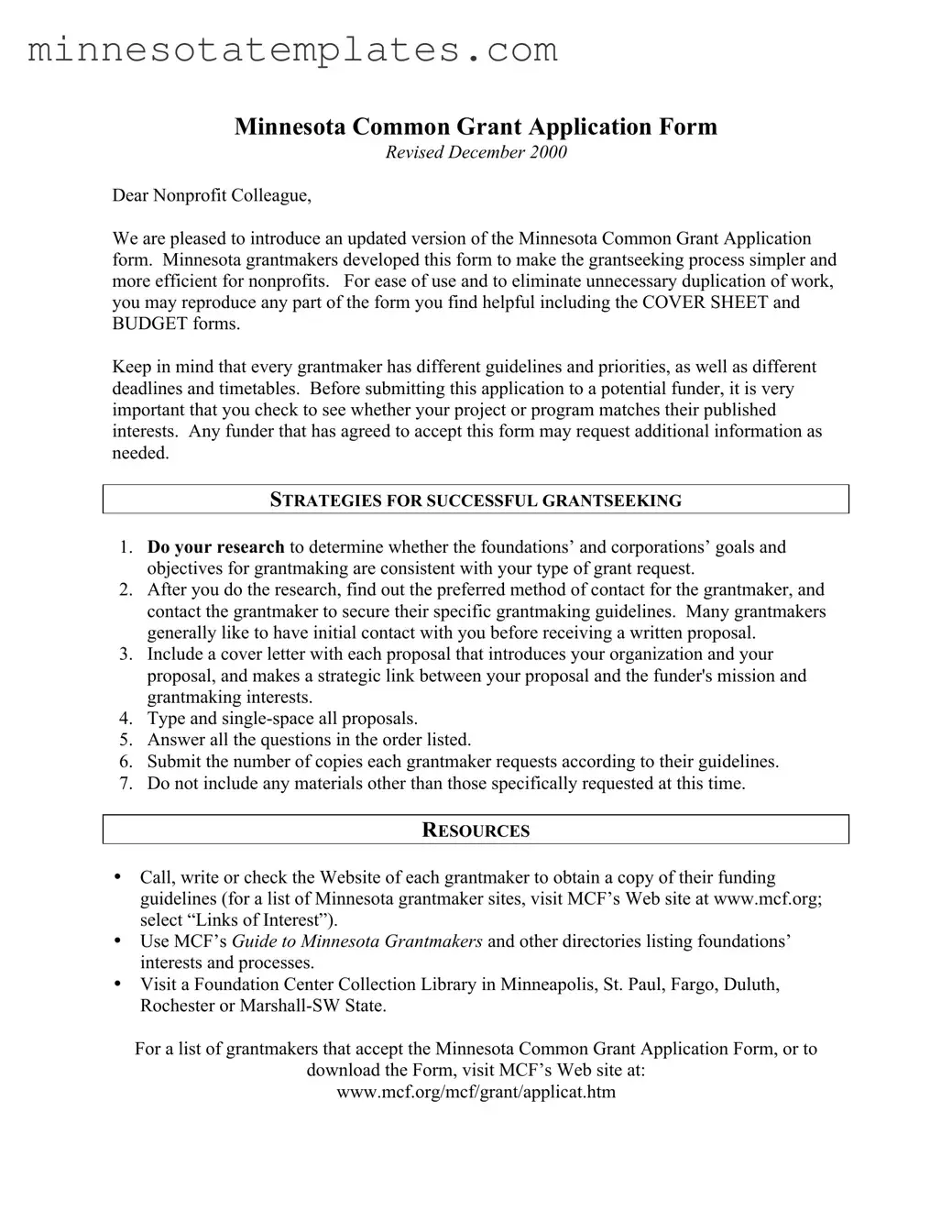The Minnesota Grant Application form serves as a vital tool for nonprofits seeking funding from various grantmakers across the state. Designed to streamline the grantseeking process, this form was developed by Minnesota grantmakers to reduce redundancy and enhance efficiency. It includes several key components, starting with a cover sheet that captures essential organization details, such as the legal name, contact information, and the nature of the funding request. The form also requires a concise summary of the proposal, outlining the population served and the geographic area impacted. Nonprofits must provide a detailed narrative that includes the organization's history, mission, and current programs, as well as the specific goals and objectives of the proposed project. Furthermore, the application emphasizes the importance of tailoring each submission to align with the unique guidelines and interests of individual grantmakers. This includes adhering to specific formatting requirements, such as typing and single-spacing all proposals, and submitting the requested number of copies. Attachments, such as financial statements and organizational budgets, are also crucial for a comprehensive application. By following these guidelines, nonprofits can significantly improve their chances of securing the funding necessary to support their missions.
